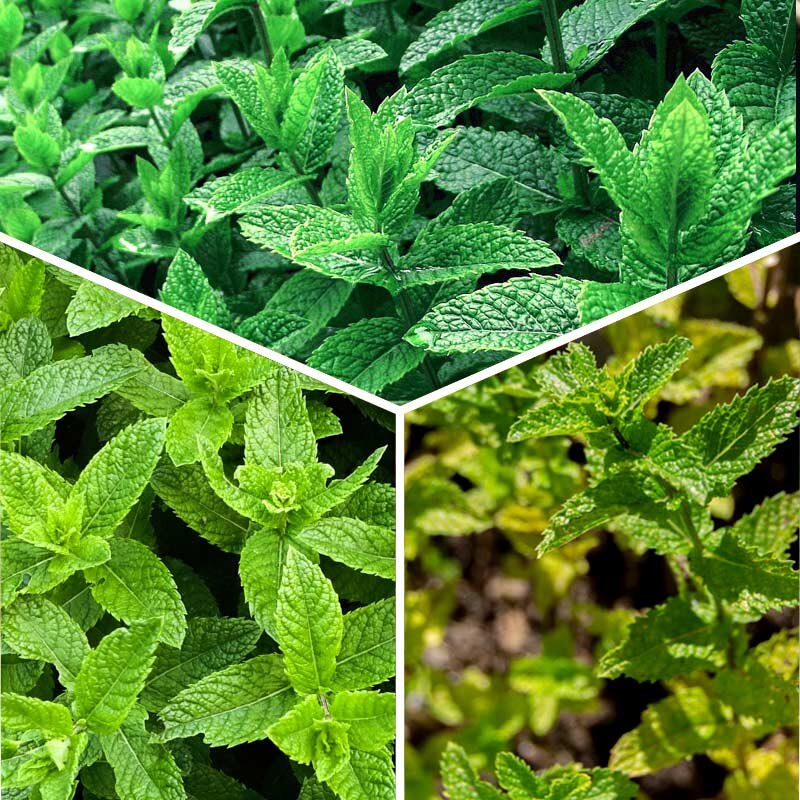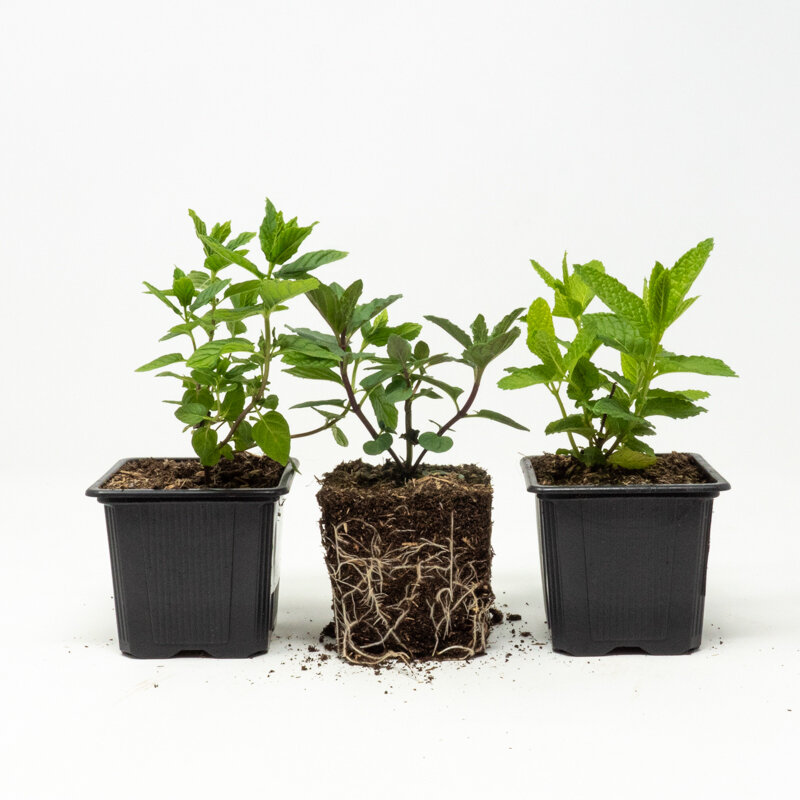3 mint plants - green, peppermint and Moroccan mint AB
Explore a world of flavors with this trio of different mint varieties: Moroccan, peppermint and spearmint! Known for thousands of years to people all over the world, mints are particularly appreciated for their intense menthol aroma, used in cooking as well as in medicine. Grow these perennial aromatic and medicinal herbs in the garden, in pots or tubs, and discover unique flavors for an explosion of freshness.
How to grow mints
Hardy and easy to grow, mint appreciates rich, cool soil and a medium to sunny exposure. It develops numerous, particularly vigorous underground runners and can quickly become invasive. We therefore recommend growing it in pots, tubs or in a well-defined area of the garden, such as a bed or border.
Transplant mint plants in early autumn or spring, after the last frosts, 40 to 50 cm apart in all directions.
Re-pot potted mint plants once a year, in spring or autumn.
At the end of the season, cut back and mulch mint plants to protect the roots from the cold.
How do I take mint cuttings?
Mint can easily be cut to produce new plants. Simply take stems directly from a vigorous plant in spring, before flowering.
- Fill pots with a mixture of potting soil and sand.
- Cut healthy green stems, about 10 cm long, between two pairs of leaves.
- Remove the leaves from two-thirds of the lower part of the cutting.
- Prick the cuttings in the middle of each cup.
- Place the cuttings in a well-lit room and keep them moist until they recover, usually after one or two weeks.
- Re-pot into a larger pot as soon as the cuttings start to develop well.
Spearmint, Moroccan mint and peppermint: uses and benefits
Spearmint, sweet and versatile, is a must for any herb garden. It can grow up to 1 m tall, with light-green, delicately scented leaves. In late summer, it blooms with spikes of light pink to purple flowers, and is particularly useful in cooking, for flavoring meats and sauces, as well as in infusions, syrups, liqueurs and more. In addition to its culinary qualities, it has tonic, fortifying, digestive and antispasmodic properties.
Moroccan mint, a more aromatic spearmint, belongs to the same botanical species as spearmint. It grows to around 70 cm in height and produces more embossed leaves, with a more intense flavor, and is more resistant to drought than spearmint. It is traditionally used to make the famous mint tea, but can also be used to flavour any sweet or savoury recipe.
Peppermint, the result of spontaneous hybridization between water mint and spearmint, contains a higher concentration of menthol than most other mints. This gives it an incredibly intense flavor, both refreshing and pungent. It is particularly useful in phytotherapy for its general tonic, digestive and analgesic virtues, and in aromatherapy for its anti-infectious, vermicidal, stimulant, cardiotonic, stomachic and antispasmodic properties.
It is particularly used in phytotherapy for its aromatic, general tonic, digestive and analgesic virtues, as well as in aromatherapy for its anti-infectious, vermicidal, stimulant, cardiotonic, stomachic, antispasmodic and other properties.
Shipping and delivery of the Mint assortment
- Orders are dispatched Monday to Thursday.
- Shipment to mainland France only.
- Shipping cartons designed for optimal plant protection.
- Free shipping does not apply to plants.










